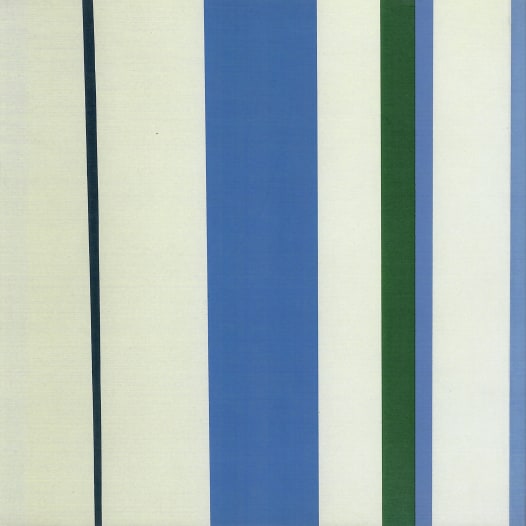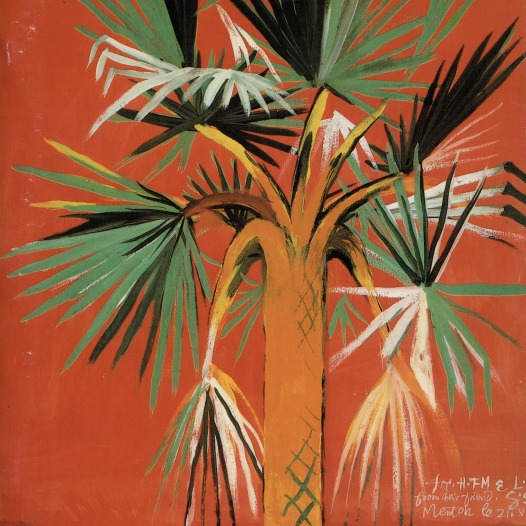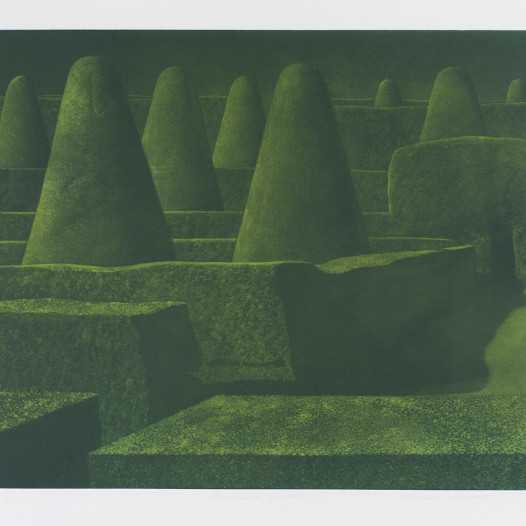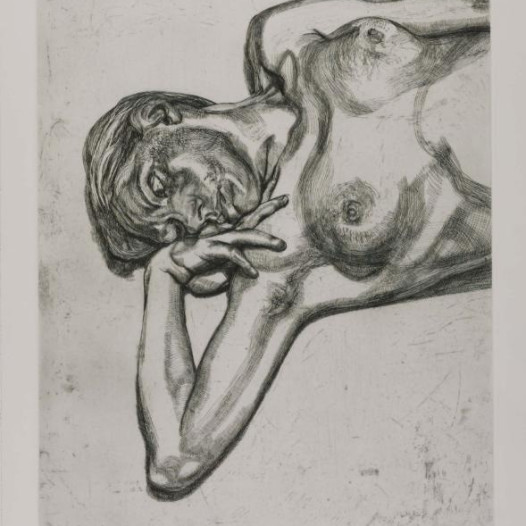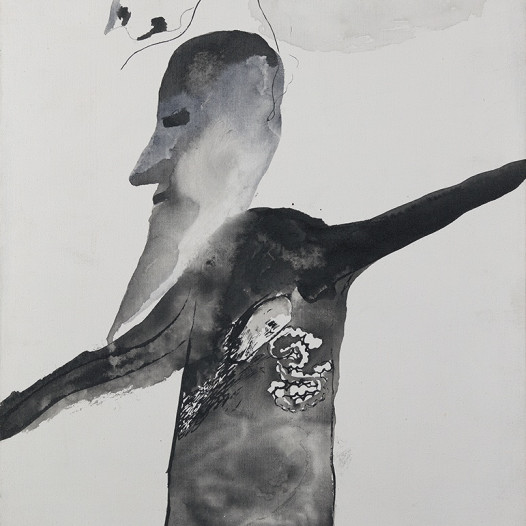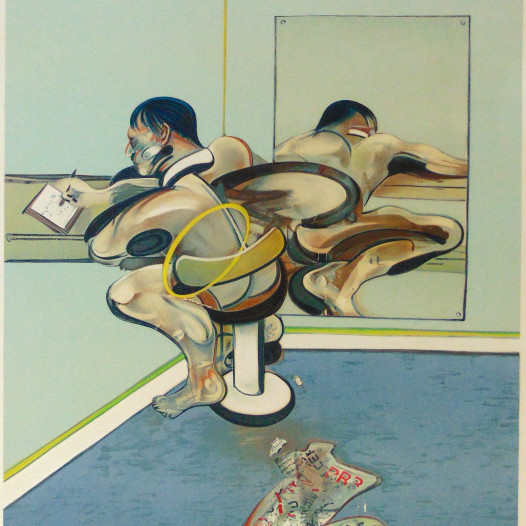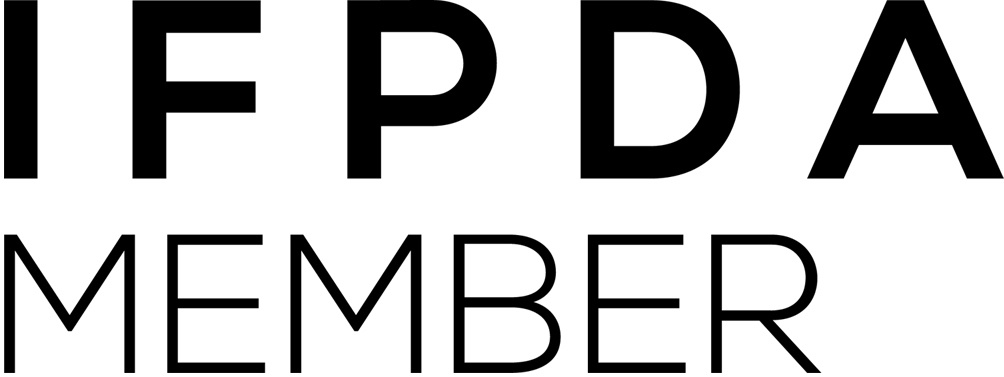Stanley William Hayter
1901–1988Born in Hackney, East London, in 1901, Stanley William Hayter initially trained as a scientist, studying chemistry and geology at King’s College, London. He worked in Iran for an oil company until 1926, when he left the world of science for that of art. His early training was invaluable, however, allowing him to experiment with new and innovative printmaking techniques.
Hayter moved to Paris to study at the Académie Julian, where he also worked for the publisher, Skira. It was here that he met fellow printmaker Anthony Gross, with whom he became fast friends—the pair studied together under Joseph Hecht. Hayter also struck up a firm friendship with Hecht, which endured until the latter's death in 1951. Hayter experimented with using a burin, a type of chisel that he used for the rest of his career, which brought “aggressiveness and violent energy” (Désirée Moorhead, 1992) to his work. In 1933, he moved his print workshop, which he had founded in 1927, to No.17 Campagne Première, and thereby gave it its name, Atelier 17. The workshop brought him into close contact with influential artists such as Calder and Picasso, as well as the Surrealist movement, some of whose ideas filtered into his work—exploring the unconscious, dream-states and automatism. This interest in Surrealism grew, and he helped to organise (and exhibited in) the International Surrealist Exhibition at the New Burlington Galleries in 1936.
The outbreak of war in France prompted Hayter, along with many of his contemporaries, to move to New York. In 1937 he visited Spain at the invitation of the Art Association of the Republican Government of Spain, where his pity for the Spanish citizens prompted him to organise the publication of two collections of prints—Solidarity (1938), and Fraternity (1939), with contributions by Miró, Tanguy, Picasso, Kandinsky, Masson, and Hecht. The violence that he saw during the conflict is said to have influenced his own bellicose work.
In 1940, Hayter reopened Atelier 17 in New York, this time in the form of a course at the New School for Social Research (formally reestablishing the Atlier in 1945. He recruited refugees who practised sociological science—Claude Lévi-Strauss, Erich Fromm, and Rudolf Arnheim. This inclusion attracted young Americans, and his own writings on the subject influenced Rothko and Pollock. In 1944, Atelier 17 held a large exhibition at the Museum of Modern Art, in New York.
Hayter’s interest in innovative techniques saw him introducing colour to copperplate, moving into one-plate, multi-colour printing. In the 1950s, returning to Paris, he also experimented with viscosity, the differing thicknesses of each colour allowing them to separate across the etched surfaces of his plates. A piece that he made with this technique, ‘Poisson Rouge’, won a prize at the international exhibition in Lugano. Two others won at the Tokyo International Prints Biennale. In the 1970s, he added figurative elements to his composition, though these never became truly realist.
Hayter’s vibrant, vital, prints, paintings, and drawings were characterised by intense movement and colour, and showcased his new techniques and discoveries. He continued to work until his death in 1988. In the years before his death the Légion d'honneur, which he had been awarded in 1951, was supplemented by an OBE (1959), his being made a Chevalier de l'Ordre des Arts et Lettres (1968), and then Commandeur des Arts et Lettres (1986). He was also made a CBE (1968) and an honorary Royal Academician (1982). In 1978 he was elected Foreign Member of the American Academy of Arts and Sciences. He was further honoured by the purchase by the British Museum of 400 of his prints, the largest acquisition that it had ever made from a living artist.
Works
-
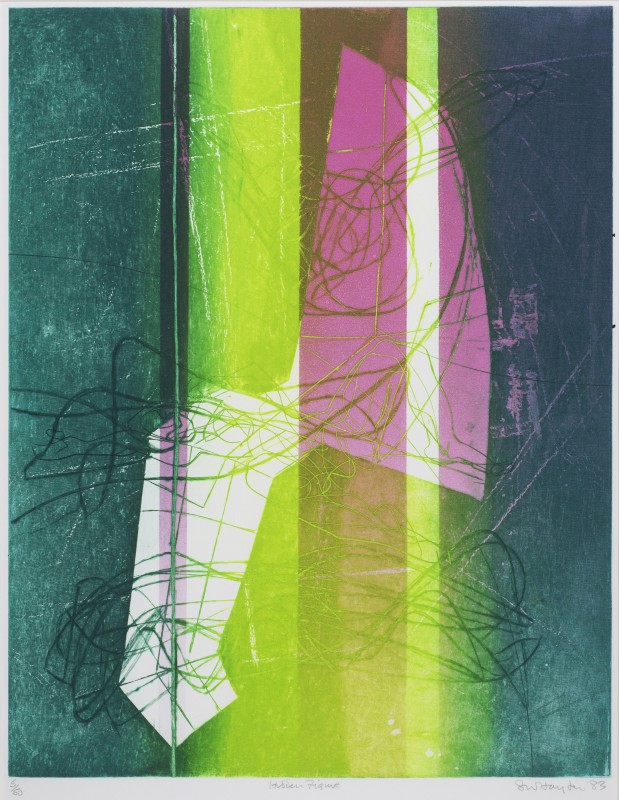 Stanley William HayterHidden Figure, 1983Engraving and soft-ground etching52 x 41 cm (image)From the edition of 50 impressionsSigned, dated, titled and numbered%3Cdiv%20class%3D%22artist%22%3E%3Cspan%20class%3D%22artist%22%3E%3Cstrong%3EStanley%20William%20Hayter%3C/strong%3E%3C/span%3E%3C/div%3E%0D%3Cdiv%20class%3D%22title%22%3E%3Cem%3EHidden%20Figure%3C/em%3E%2C%201983%3C/div%3E%0D%3Cdiv%20class%3D%22signed_and_dated%22%3ESigned%2C%20dated%2C%20titled%20and%20numbered%3C/div%3E%0D%3Cdiv%20class%3D%22medium%22%3EEngraving%20and%20soft-ground%20etching%3C/div%3E%0D%3Cdiv%20class%3D%22dimensions%22%3E52%20x%2041%20cm%20%28image%29%3C/div%3E%0D%3Cdiv%20class%3D%22edition_details%22%3EFrom%20the%20edition%20of%2050%20impressions%3C/div%3E
Stanley William HayterHidden Figure, 1983Engraving and soft-ground etching52 x 41 cm (image)From the edition of 50 impressionsSigned, dated, titled and numbered%3Cdiv%20class%3D%22artist%22%3E%3Cspan%20class%3D%22artist%22%3E%3Cstrong%3EStanley%20William%20Hayter%3C/strong%3E%3C/span%3E%3C/div%3E%0D%3Cdiv%20class%3D%22title%22%3E%3Cem%3EHidden%20Figure%3C/em%3E%2C%201983%3C/div%3E%0D%3Cdiv%20class%3D%22signed_and_dated%22%3ESigned%2C%20dated%2C%20titled%20and%20numbered%3C/div%3E%0D%3Cdiv%20class%3D%22medium%22%3EEngraving%20and%20soft-ground%20etching%3C/div%3E%0D%3Cdiv%20class%3D%22dimensions%22%3E52%20x%2041%20cm%20%28image%29%3C/div%3E%0D%3Cdiv%20class%3D%22edition_details%22%3EFrom%20the%20edition%20of%2050%20impressions%3C/div%3E -
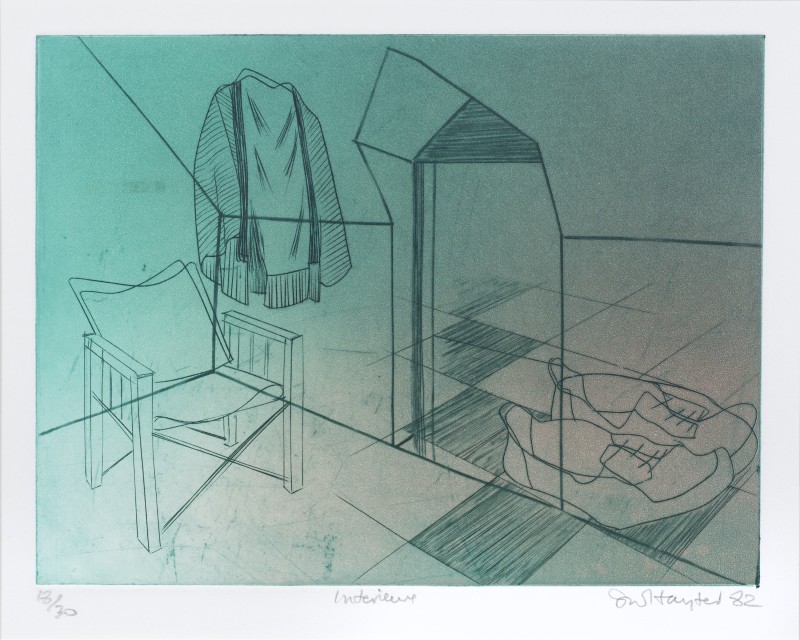 Stanley William HayterInterieure, 1982Engraving22 x 29 cm (image)From the edition of 30 impressionsSigned, dated, titled and numbered%3Cdiv%20class%3D%22artist%22%3E%3Cspan%20class%3D%22artist%22%3E%3Cstrong%3EStanley%20William%20Hayter%3C/strong%3E%3C/span%3E%3C/div%3E%0D%3Cdiv%20class%3D%22title%22%3E%3Cem%3EInterieure%3C/em%3E%2C%201982%3C/div%3E%0D%3Cdiv%20class%3D%22signed_and_dated%22%3ESigned%2C%20dated%2C%20titled%20and%20numbered%3C/div%3E%0D%3Cdiv%20class%3D%22medium%22%3EEngraving%3C/div%3E%0D%3Cdiv%20class%3D%22dimensions%22%3E22%20x%2029%20cm%20%28image%29%3C/div%3E%0D%3Cdiv%20class%3D%22edition_details%22%3EFrom%20the%20edition%20of%2030%20impressions%3C/div%3E
Stanley William HayterInterieure, 1982Engraving22 x 29 cm (image)From the edition of 30 impressionsSigned, dated, titled and numbered%3Cdiv%20class%3D%22artist%22%3E%3Cspan%20class%3D%22artist%22%3E%3Cstrong%3EStanley%20William%20Hayter%3C/strong%3E%3C/span%3E%3C/div%3E%0D%3Cdiv%20class%3D%22title%22%3E%3Cem%3EInterieure%3C/em%3E%2C%201982%3C/div%3E%0D%3Cdiv%20class%3D%22signed_and_dated%22%3ESigned%2C%20dated%2C%20titled%20and%20numbered%3C/div%3E%0D%3Cdiv%20class%3D%22medium%22%3EEngraving%3C/div%3E%0D%3Cdiv%20class%3D%22dimensions%22%3E22%20x%2029%20cm%20%28image%29%3C/div%3E%0D%3Cdiv%20class%3D%22edition_details%22%3EFrom%20the%20edition%20of%2030%20impressions%3C/div%3E -
 Stanley William HayterHex, 1981Engraving and roulette50 x 49 cm (image)From the edition of 50 impressionsSigned, dated, titled and numbered%3Cdiv%20class%3D%22artist%22%3E%3Cspan%20class%3D%22artist%22%3E%3Cstrong%3EStanley%20William%20Hayter%3C/strong%3E%3C/span%3E%3C/div%3E%0D%3Cdiv%20class%3D%22title%22%3E%3Cem%3EHex%3C/em%3E%2C%201981%3C/div%3E%0D%3Cdiv%20class%3D%22signed_and_dated%22%3ESigned%2C%20dated%2C%20titled%20and%20numbered%3C/div%3E%0D%3Cdiv%20class%3D%22medium%22%3EEngraving%20and%20roulette%3C/div%3E%0D%3Cdiv%20class%3D%22dimensions%22%3E50%20x%2049%20cm%20%28image%29%3C/div%3E%0D%3Cdiv%20class%3D%22edition_details%22%3EFrom%20the%20edition%20of%2050%20impressions%3C/div%3E
Stanley William HayterHex, 1981Engraving and roulette50 x 49 cm (image)From the edition of 50 impressionsSigned, dated, titled and numbered%3Cdiv%20class%3D%22artist%22%3E%3Cspan%20class%3D%22artist%22%3E%3Cstrong%3EStanley%20William%20Hayter%3C/strong%3E%3C/span%3E%3C/div%3E%0D%3Cdiv%20class%3D%22title%22%3E%3Cem%3EHex%3C/em%3E%2C%201981%3C/div%3E%0D%3Cdiv%20class%3D%22signed_and_dated%22%3ESigned%2C%20dated%2C%20titled%20and%20numbered%3C/div%3E%0D%3Cdiv%20class%3D%22medium%22%3EEngraving%20and%20roulette%3C/div%3E%0D%3Cdiv%20class%3D%22dimensions%22%3E50%20x%2049%20cm%20%28image%29%3C/div%3E%0D%3Cdiv%20class%3D%22edition_details%22%3EFrom%20the%20edition%20of%2050%20impressions%3C/div%3E -
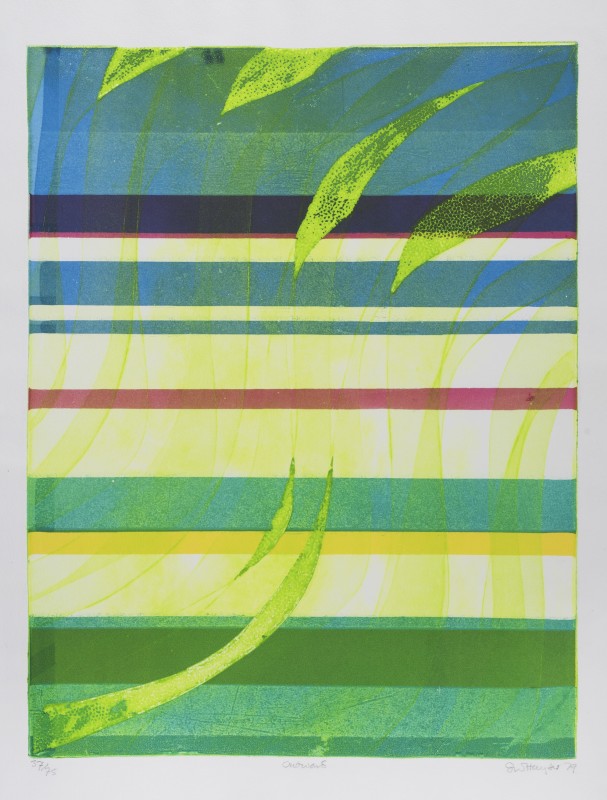 Stanley William HayterOutward, 1979Soft-ground etching64 x 49 cm (image)From the edition of 75 impressionsSigned, dated, titled and numbered%3Cdiv%20class%3D%22artist%22%3E%3Cspan%20class%3D%22artist%22%3E%3Cstrong%3EStanley%20William%20Hayter%3C/strong%3E%3C/span%3E%3C/div%3E%0D%3Cdiv%20class%3D%22title%22%3E%3Cem%3EOutward%3C/em%3E%2C%201979%3C/div%3E%0D%3Cdiv%20class%3D%22signed_and_dated%22%3ESigned%2C%20dated%2C%20titled%20and%20numbered%3C/div%3E%0D%3Cdiv%20class%3D%22medium%22%3ESoft-ground%20etching%3C/div%3E%0D%3Cdiv%20class%3D%22dimensions%22%3E64%20x%2049%20cm%20%28image%29%3C/div%3E%0D%3Cdiv%20class%3D%22edition_details%22%3EFrom%20the%20edition%20of%2075%20impressions%3C/div%3E
Stanley William HayterOutward, 1979Soft-ground etching64 x 49 cm (image)From the edition of 75 impressionsSigned, dated, titled and numbered%3Cdiv%20class%3D%22artist%22%3E%3Cspan%20class%3D%22artist%22%3E%3Cstrong%3EStanley%20William%20Hayter%3C/strong%3E%3C/span%3E%3C/div%3E%0D%3Cdiv%20class%3D%22title%22%3E%3Cem%3EOutward%3C/em%3E%2C%201979%3C/div%3E%0D%3Cdiv%20class%3D%22signed_and_dated%22%3ESigned%2C%20dated%2C%20titled%20and%20numbered%3C/div%3E%0D%3Cdiv%20class%3D%22medium%22%3ESoft-ground%20etching%3C/div%3E%0D%3Cdiv%20class%3D%22dimensions%22%3E64%20x%2049%20cm%20%28image%29%3C/div%3E%0D%3Cdiv%20class%3D%22edition_details%22%3EFrom%20the%20edition%20of%2075%20impressions%3C/div%3E -
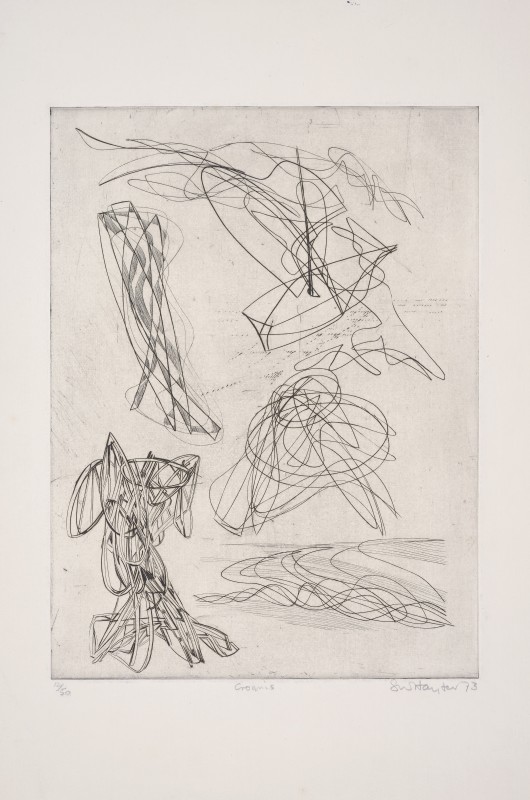 Stanley William HayterCroquis, 1973Engraving39 x 30 cm (image)From the edition of 50 impressionsSigned, dated, titled and numbered%3Cdiv%20class%3D%22artist%22%3E%3Cspan%20class%3D%22artist%22%3E%3Cstrong%3EStanley%20William%20Hayter%3C/strong%3E%3C/span%3E%3C/div%3E%0D%3Cdiv%20class%3D%22title%22%3E%3Cem%3ECroquis%3C/em%3E%2C%201973%3C/div%3E%0D%3Cdiv%20class%3D%22signed_and_dated%22%3ESigned%2C%20dated%2C%20titled%20and%20numbered%3C/div%3E%0D%3Cdiv%20class%3D%22medium%22%3EEngraving%3C/div%3E%0D%3Cdiv%20class%3D%22dimensions%22%3E39%20x%2030%20cm%20%28image%29%3C/div%3E%0D%3Cdiv%20class%3D%22edition_details%22%3EFrom%20the%20edition%20of%2050%20impressions%3C/div%3E
Stanley William HayterCroquis, 1973Engraving39 x 30 cm (image)From the edition of 50 impressionsSigned, dated, titled and numbered%3Cdiv%20class%3D%22artist%22%3E%3Cspan%20class%3D%22artist%22%3E%3Cstrong%3EStanley%20William%20Hayter%3C/strong%3E%3C/span%3E%3C/div%3E%0D%3Cdiv%20class%3D%22title%22%3E%3Cem%3ECroquis%3C/em%3E%2C%201973%3C/div%3E%0D%3Cdiv%20class%3D%22signed_and_dated%22%3ESigned%2C%20dated%2C%20titled%20and%20numbered%3C/div%3E%0D%3Cdiv%20class%3D%22medium%22%3EEngraving%3C/div%3E%0D%3Cdiv%20class%3D%22dimensions%22%3E39%20x%2030%20cm%20%28image%29%3C/div%3E%0D%3Cdiv%20class%3D%22edition_details%22%3EFrom%20the%20edition%20of%2050%20impressions%3C/div%3E -
 Stanley William HayterUntitled, 1964Pastel on paper50 x 67 cmSigned and dated lower right%3Cdiv%20class%3D%22artist%22%3E%3Cspan%20class%3D%22artist%22%3E%3Cstrong%3EStanley%20William%20Hayter%3C/strong%3E%3C/span%3E%3C/div%3E%0D%3Cdiv%20class%3D%22title%22%3E%3Cem%3EUntitled%3C/em%3E%2C%201964%3C/div%3E%0D%3Cdiv%20class%3D%22signed_and_dated%22%3ESigned%20and%20dated%20lower%20right%3C/div%3E%0D%3Cdiv%20class%3D%22medium%22%3EPastel%20on%20paper%3C/div%3E%0D%3Cdiv%20class%3D%22dimensions%22%3E50%20x%2067%20cm%3C/div%3E
Stanley William HayterUntitled, 1964Pastel on paper50 x 67 cmSigned and dated lower right%3Cdiv%20class%3D%22artist%22%3E%3Cspan%20class%3D%22artist%22%3E%3Cstrong%3EStanley%20William%20Hayter%3C/strong%3E%3C/span%3E%3C/div%3E%0D%3Cdiv%20class%3D%22title%22%3E%3Cem%3EUntitled%3C/em%3E%2C%201964%3C/div%3E%0D%3Cdiv%20class%3D%22signed_and_dated%22%3ESigned%20and%20dated%20lower%20right%3C/div%3E%0D%3Cdiv%20class%3D%22medium%22%3EPastel%20on%20paper%3C/div%3E%0D%3Cdiv%20class%3D%22dimensions%22%3E50%20x%2067%20cm%3C/div%3E -
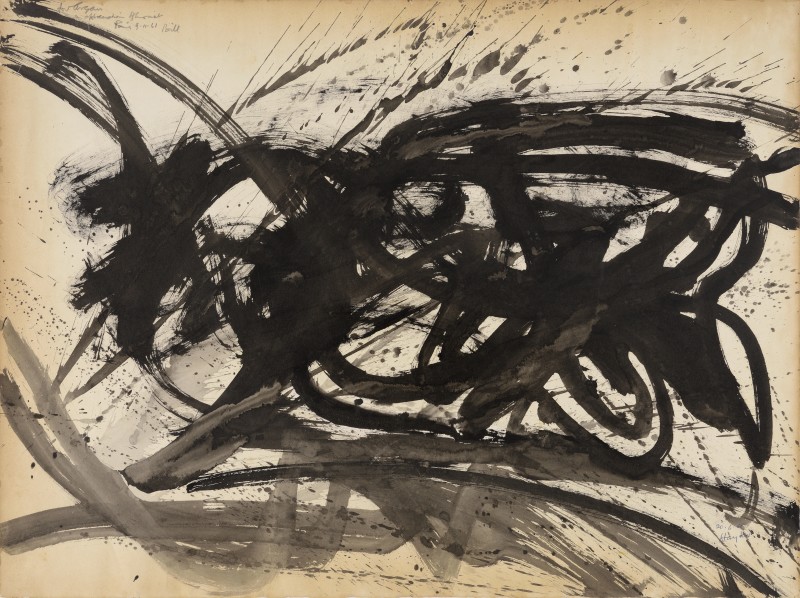 Stanley William HayterUntitled, 1961Ink on cream wove paper50 x 67 cmSigned and dated lower right; inscribed upper left%3Cdiv%20class%3D%22artist%22%3E%3Cspan%20class%3D%22artist%22%3E%3Cstrong%3EStanley%20William%20Hayter%3C/strong%3E%3C/span%3E%3C/div%3E%0D%3Cdiv%20class%3D%22title%22%3E%3Cem%3EUntitled%3C/em%3E%2C%201961%3C/div%3E%0D%3Cdiv%20class%3D%22signed_and_dated%22%3ESigned%20and%20dated%20lower%20right%3B%20inscribed%20upper%20left%3C/div%3E%0D%3Cdiv%20class%3D%22medium%22%3EInk%20on%20cream%20wove%20paper%3C/div%3E%0D%3Cdiv%20class%3D%22dimensions%22%3E50%20x%2067%20cm%3C/div%3E
Stanley William HayterUntitled, 1961Ink on cream wove paper50 x 67 cmSigned and dated lower right; inscribed upper left%3Cdiv%20class%3D%22artist%22%3E%3Cspan%20class%3D%22artist%22%3E%3Cstrong%3EStanley%20William%20Hayter%3C/strong%3E%3C/span%3E%3C/div%3E%0D%3Cdiv%20class%3D%22title%22%3E%3Cem%3EUntitled%3C/em%3E%2C%201961%3C/div%3E%0D%3Cdiv%20class%3D%22signed_and_dated%22%3ESigned%20and%20dated%20lower%20right%3B%20inscribed%20upper%20left%3C/div%3E%0D%3Cdiv%20class%3D%22medium%22%3EInk%20on%20cream%20wove%20paper%3C/div%3E%0D%3Cdiv%20class%3D%22dimensions%22%3E50%20x%2067%20cm%3C/div%3E -
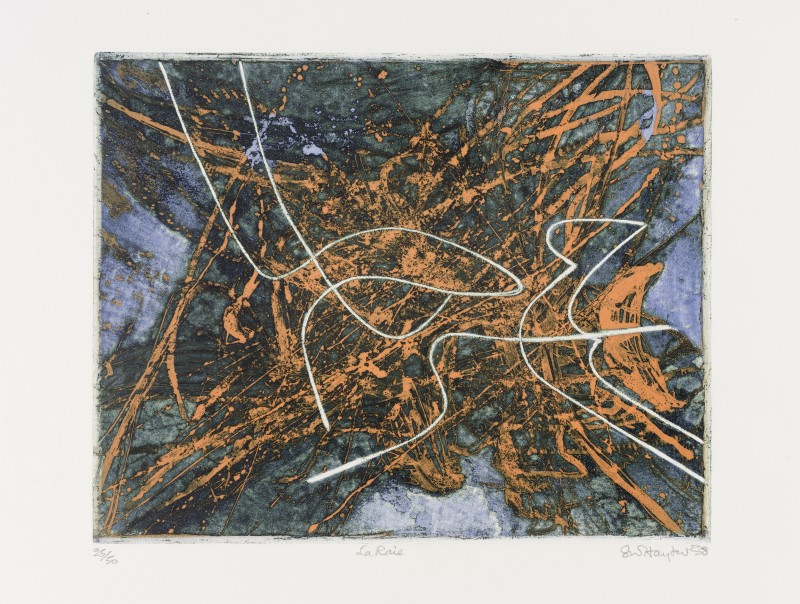 Stanley William HayterLa Raie, 1958Etching and scorper30 x 37 cm (image)From the edition of 50 impressionsSigned, dated, titled and numbered%3Cdiv%20class%3D%22artist%22%3E%3Cspan%20class%3D%22artist%22%3E%3Cstrong%3EStanley%20William%20Hayter%3C/strong%3E%3C/span%3E%3C/div%3E%0D%3Cdiv%20class%3D%22title%22%3E%3Cem%3ELa%20Raie%3C/em%3E%2C%201958%3C/div%3E%0D%3Cdiv%20class%3D%22signed_and_dated%22%3ESigned%2C%20dated%2C%20titled%20and%20numbered%20%3C/div%3E%0D%3Cdiv%20class%3D%22medium%22%3EEtching%20and%20scorper%3C/div%3E%0D%3Cdiv%20class%3D%22dimensions%22%3E30%20x%2037%20cm%20%28image%29%3C/div%3E%0D%3Cdiv%20class%3D%22edition_details%22%3EFrom%20the%20edition%20of%2050%20impressions%3C/div%3E
Stanley William HayterLa Raie, 1958Etching and scorper30 x 37 cm (image)From the edition of 50 impressionsSigned, dated, titled and numbered%3Cdiv%20class%3D%22artist%22%3E%3Cspan%20class%3D%22artist%22%3E%3Cstrong%3EStanley%20William%20Hayter%3C/strong%3E%3C/span%3E%3C/div%3E%0D%3Cdiv%20class%3D%22title%22%3E%3Cem%3ELa%20Raie%3C/em%3E%2C%201958%3C/div%3E%0D%3Cdiv%20class%3D%22signed_and_dated%22%3ESigned%2C%20dated%2C%20titled%20and%20numbered%20%3C/div%3E%0D%3Cdiv%20class%3D%22medium%22%3EEtching%20and%20scorper%3C/div%3E%0D%3Cdiv%20class%3D%22dimensions%22%3E30%20x%2037%20cm%20%28image%29%3C/div%3E%0D%3Cdiv%20class%3D%22edition_details%22%3EFrom%20the%20edition%20of%2050%20impressions%3C/div%3E -
 Stanley William HayterPerseides, 1958Etching30 x 38 cm (image)From the edition of 50 impressionsSigned, dated, titled and numbered%3Cdiv%20class%3D%22artist%22%3E%3Cspan%20class%3D%22artist%22%3E%3Cstrong%3EStanley%20William%20Hayter%3C/strong%3E%3C/span%3E%3C/div%3E%0D%3Cdiv%20class%3D%22title%22%3E%3Cem%3EPerseides%3C/em%3E%2C%201958%3C/div%3E%0D%3Cdiv%20class%3D%22signed_and_dated%22%3ESigned%2C%20dated%2C%20titled%20and%20numbered%3C/div%3E%0D%3Cdiv%20class%3D%22medium%22%3EEtching%20%3C/div%3E%0D%3Cdiv%20class%3D%22dimensions%22%3E30%20x%2038%20cm%20%28image%29%3C/div%3E%0D%3Cdiv%20class%3D%22edition_details%22%3EFrom%20the%20edition%20of%2050%20impressions%3C/div%3E
Stanley William HayterPerseides, 1958Etching30 x 38 cm (image)From the edition of 50 impressionsSigned, dated, titled and numbered%3Cdiv%20class%3D%22artist%22%3E%3Cspan%20class%3D%22artist%22%3E%3Cstrong%3EStanley%20William%20Hayter%3C/strong%3E%3C/span%3E%3C/div%3E%0D%3Cdiv%20class%3D%22title%22%3E%3Cem%3EPerseides%3C/em%3E%2C%201958%3C/div%3E%0D%3Cdiv%20class%3D%22signed_and_dated%22%3ESigned%2C%20dated%2C%20titled%20and%20numbered%3C/div%3E%0D%3Cdiv%20class%3D%22medium%22%3EEtching%20%3C/div%3E%0D%3Cdiv%20class%3D%22dimensions%22%3E30%20x%2038%20cm%20%28image%29%3C/div%3E%0D%3Cdiv%20class%3D%22edition_details%22%3EFrom%20the%20edition%20of%2050%20impressions%3C/div%3E -
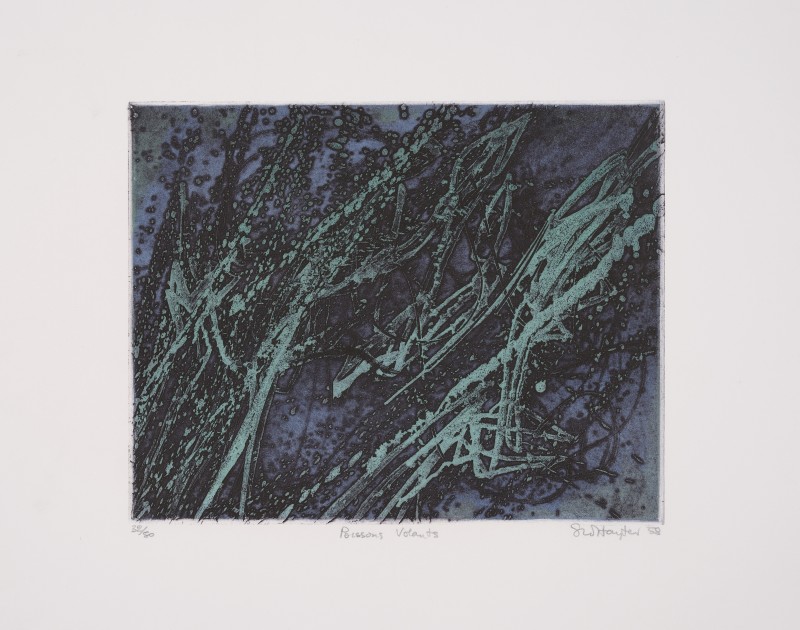 Stanley William HayterPoissons Volants, 1958Etching30 x 37 cm (image)From the edition of 50 impressionsSigned, dated, titled and numbered%3Cdiv%20class%3D%22artist%22%3E%3Cspan%20class%3D%22artist%22%3E%3Cstrong%3EStanley%20William%20Hayter%3C/strong%3E%3C/span%3E%3C/div%3E%0D%3Cdiv%20class%3D%22title%22%3E%3Cem%3EPoissons%20Volants%3C/em%3E%2C%201958%3C/div%3E%0D%3Cdiv%20class%3D%22signed_and_dated%22%3ESigned%2C%20dated%2C%20titled%20and%20numbered%3C/div%3E%0D%3Cdiv%20class%3D%22medium%22%3EEtching%20%3C/div%3E%0D%3Cdiv%20class%3D%22dimensions%22%3E30%20x%2037%20cm%20%28image%29%3C/div%3E%0D%3Cdiv%20class%3D%22edition_details%22%3EFrom%20the%20edition%20of%2050%20impressions%3C/div%3E
Stanley William HayterPoissons Volants, 1958Etching30 x 37 cm (image)From the edition of 50 impressionsSigned, dated, titled and numbered%3Cdiv%20class%3D%22artist%22%3E%3Cspan%20class%3D%22artist%22%3E%3Cstrong%3EStanley%20William%20Hayter%3C/strong%3E%3C/span%3E%3C/div%3E%0D%3Cdiv%20class%3D%22title%22%3E%3Cem%3EPoissons%20Volants%3C/em%3E%2C%201958%3C/div%3E%0D%3Cdiv%20class%3D%22signed_and_dated%22%3ESigned%2C%20dated%2C%20titled%20and%20numbered%3C/div%3E%0D%3Cdiv%20class%3D%22medium%22%3EEtching%20%3C/div%3E%0D%3Cdiv%20class%3D%22dimensions%22%3E30%20x%2037%20cm%20%28image%29%3C/div%3E%0D%3Cdiv%20class%3D%22edition_details%22%3EFrom%20the%20edition%20of%2050%20impressions%3C/div%3E -
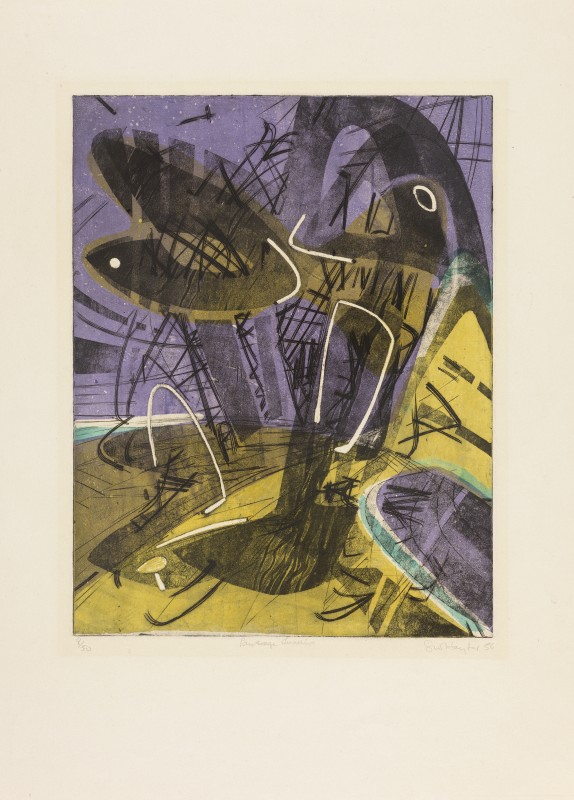 Stanley William HayterPaysage Lunaire, 1956Engraving, soft-ground etching, and scorper37 x 29 cm (image)From the edition of 50 impressionsSigned, dated, titled and numbered%3Cdiv%20class%3D%22artist%22%3E%3Cspan%20class%3D%22artist%22%3E%3Cstrong%3EStanley%20William%20Hayter%3C/strong%3E%3C/span%3E%3C/div%3E%0D%3Cdiv%20class%3D%22title%22%3E%3Cem%3EPaysage%20Lunaire%3C/em%3E%2C%201956%3C/div%3E%0D%3Cdiv%20class%3D%22signed_and_dated%22%3ESigned%2C%20dated%2C%20titled%20and%20numbered%20%3C/div%3E%0D%3Cdiv%20class%3D%22medium%22%3EEngraving%2C%20soft-ground%20etching%2C%20and%20scorper%3C/div%3E%0D%3Cdiv%20class%3D%22dimensions%22%3E37%20x%2029%20cm%20%28image%29%3C/div%3E%0D%3Cdiv%20class%3D%22edition_details%22%3EFrom%20the%20edition%20of%2050%20impressions%3C/div%3E
Stanley William HayterPaysage Lunaire, 1956Engraving, soft-ground etching, and scorper37 x 29 cm (image)From the edition of 50 impressionsSigned, dated, titled and numbered%3Cdiv%20class%3D%22artist%22%3E%3Cspan%20class%3D%22artist%22%3E%3Cstrong%3EStanley%20William%20Hayter%3C/strong%3E%3C/span%3E%3C/div%3E%0D%3Cdiv%20class%3D%22title%22%3E%3Cem%3EPaysage%20Lunaire%3C/em%3E%2C%201956%3C/div%3E%0D%3Cdiv%20class%3D%22signed_and_dated%22%3ESigned%2C%20dated%2C%20titled%20and%20numbered%20%3C/div%3E%0D%3Cdiv%20class%3D%22medium%22%3EEngraving%2C%20soft-ground%20etching%2C%20and%20scorper%3C/div%3E%0D%3Cdiv%20class%3D%22dimensions%22%3E37%20x%2029%20cm%20%28image%29%3C/div%3E%0D%3Cdiv%20class%3D%22edition_details%22%3EFrom%20the%20edition%20of%2050%20impressions%3C/div%3E -
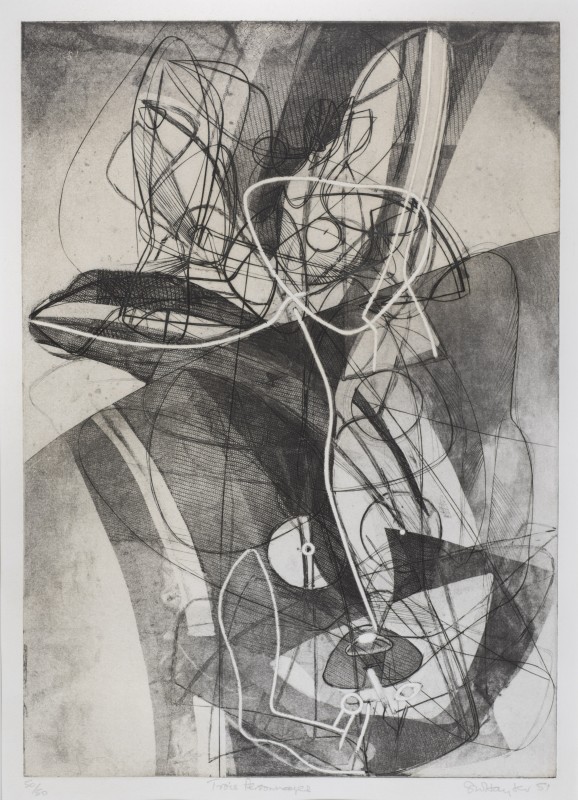 Stanley William HayterTrois Personnages, 1951Engraving, drypoint, soft ground etching and scooper49 x 34 cm (image)From the edition of 50 impressionsSigned, dated, titled and numbered%3Cdiv%20class%3D%22artist%22%3E%3Cspan%20class%3D%22artist%22%3E%3Cstrong%3EStanley%20William%20Hayter%3C/strong%3E%3C/span%3E%3C/div%3E%0D%3Cdiv%20class%3D%22title%22%3E%3Cem%3ETrois%20Personnages%3C/em%3E%2C%201951%3C/div%3E%0D%3Cdiv%20class%3D%22signed_and_dated%22%3ESigned%2C%20dated%2C%20titled%20and%20numbered%3C/div%3E%0D%3Cdiv%20class%3D%22medium%22%3EEngraving%2C%20drypoint%2C%20soft%20ground%20etching%20and%20scooper%3C/div%3E%0D%3Cdiv%20class%3D%22dimensions%22%3E49%20x%2034%20cm%20%28image%29%3C/div%3E%0D%3Cdiv%20class%3D%22edition_details%22%3EFrom%20the%20edition%20of%2050%20impressions%3C/div%3E
Stanley William HayterTrois Personnages, 1951Engraving, drypoint, soft ground etching and scooper49 x 34 cm (image)From the edition of 50 impressionsSigned, dated, titled and numbered%3Cdiv%20class%3D%22artist%22%3E%3Cspan%20class%3D%22artist%22%3E%3Cstrong%3EStanley%20William%20Hayter%3C/strong%3E%3C/span%3E%3C/div%3E%0D%3Cdiv%20class%3D%22title%22%3E%3Cem%3ETrois%20Personnages%3C/em%3E%2C%201951%3C/div%3E%0D%3Cdiv%20class%3D%22signed_and_dated%22%3ESigned%2C%20dated%2C%20titled%20and%20numbered%3C/div%3E%0D%3Cdiv%20class%3D%22medium%22%3EEngraving%2C%20drypoint%2C%20soft%20ground%20etching%20and%20scooper%3C/div%3E%0D%3Cdiv%20class%3D%22dimensions%22%3E49%20x%2034%20cm%20%28image%29%3C/div%3E%0D%3Cdiv%20class%3D%22edition_details%22%3EFrom%20the%20edition%20of%2050%20impressions%3C/div%3E -
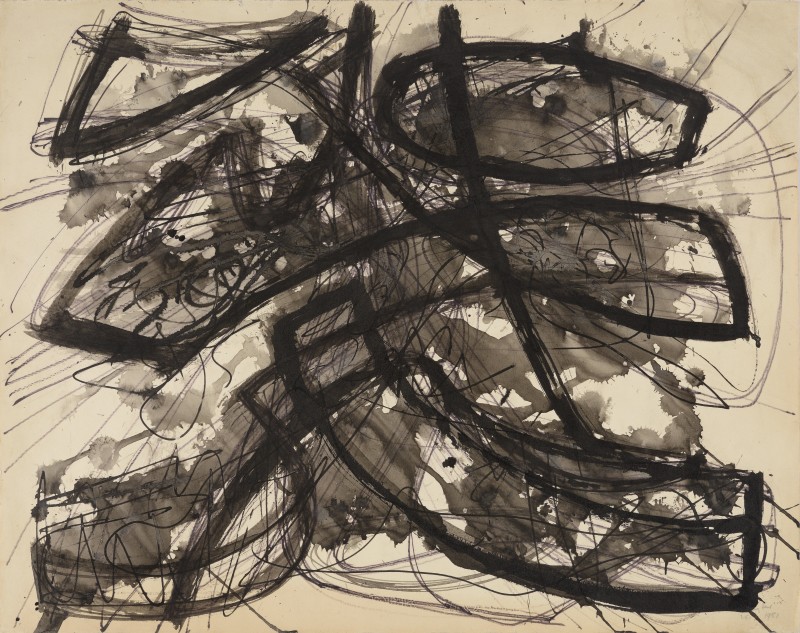 Stanley William HayterUntitled, 1951Ink on cream wove paper50 x 63 cmSigned and dated lower right%3Cdiv%20class%3D%22artist%22%3E%3Cspan%20class%3D%22artist%22%3E%3Cstrong%3EStanley%20William%20Hayter%3C/strong%3E%3C/span%3E%3C/div%3E%0D%3Cdiv%20class%3D%22title%22%3E%3Cem%3EUntitled%3C/em%3E%2C%201951%3C/div%3E%0D%3Cdiv%20class%3D%22signed_and_dated%22%3ESigned%20and%20dated%20lower%20right%3C/div%3E%0D%3Cdiv%20class%3D%22medium%22%3EInk%20on%20cream%20wove%20paper%3C/div%3E%0D%3Cdiv%20class%3D%22dimensions%22%3E50%20x%2063%20cm%3C/div%3E
Stanley William HayterUntitled, 1951Ink on cream wove paper50 x 63 cmSigned and dated lower right%3Cdiv%20class%3D%22artist%22%3E%3Cspan%20class%3D%22artist%22%3E%3Cstrong%3EStanley%20William%20Hayter%3C/strong%3E%3C/span%3E%3C/div%3E%0D%3Cdiv%20class%3D%22title%22%3E%3Cem%3EUntitled%3C/em%3E%2C%201951%3C/div%3E%0D%3Cdiv%20class%3D%22signed_and_dated%22%3ESigned%20and%20dated%20lower%20right%3C/div%3E%0D%3Cdiv%20class%3D%22medium%22%3EInk%20on%20cream%20wove%20paper%3C/div%3E%0D%3Cdiv%20class%3D%22dimensions%22%3E50%20x%2063%20cm%3C/div%3E -
 Stanley William HayterFalling Figure, 1947Engraving, soft-ground etching and scorper45 x 38 cm (image)From the edition of 50 impressionsSigned, dated, titled, and numbered%3Cdiv%20class%3D%22artist%22%3E%3Cspan%20class%3D%22artist%22%3E%3Cstrong%3EStanley%20William%20Hayter%3C/strong%3E%3C/span%3E%3C/div%3E%0D%3Cdiv%20class%3D%22title%22%3E%3Cem%3EFalling%20Figure%3C/em%3E%2C%201947%3C/div%3E%0D%3Cdiv%20class%3D%22signed_and_dated%22%3ESigned%2C%20dated%2C%20titled%2C%20and%20numbered%3C/div%3E%0D%3Cdiv%20class%3D%22medium%22%3EEngraving%2C%20soft-ground%20etching%20and%20scorper%3C/div%3E%0D%3Cdiv%20class%3D%22dimensions%22%3E45%20x%2038%20cm%20%28image%29%3C/div%3E%0D%3Cdiv%20class%3D%22edition_details%22%3EFrom%20the%20edition%20of%2050%20impressions%3C/div%3E
Stanley William HayterFalling Figure, 1947Engraving, soft-ground etching and scorper45 x 38 cm (image)From the edition of 50 impressionsSigned, dated, titled, and numbered%3Cdiv%20class%3D%22artist%22%3E%3Cspan%20class%3D%22artist%22%3E%3Cstrong%3EStanley%20William%20Hayter%3C/strong%3E%3C/span%3E%3C/div%3E%0D%3Cdiv%20class%3D%22title%22%3E%3Cem%3EFalling%20Figure%3C/em%3E%2C%201947%3C/div%3E%0D%3Cdiv%20class%3D%22signed_and_dated%22%3ESigned%2C%20dated%2C%20titled%2C%20and%20numbered%3C/div%3E%0D%3Cdiv%20class%3D%22medium%22%3EEngraving%2C%20soft-ground%20etching%20and%20scorper%3C/div%3E%0D%3Cdiv%20class%3D%22dimensions%22%3E45%20x%2038%20cm%20%28image%29%3C/div%3E%0D%3Cdiv%20class%3D%22edition_details%22%3EFrom%20the%20edition%20of%2050%20impressions%3C/div%3E -
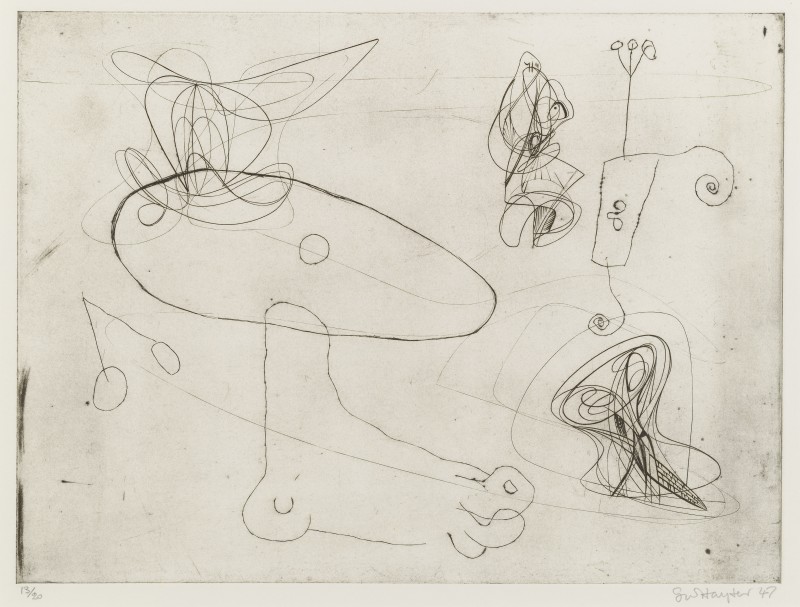 Stanley William HayterUntitled, 1947Engraving35 x 48 cm (image)From the edition of 20 impressionsSigned, dated and numbered%3Cdiv%20class%3D%22artist%22%3E%3Cspan%20class%3D%22artist%22%3E%3Cstrong%3EStanley%20William%20Hayter%3C/strong%3E%3C/span%3E%3C/div%3E%0D%3Cdiv%20class%3D%22title%22%3E%3Cem%3EUntitled%3C/em%3E%2C%201947%3C/div%3E%0D%3Cdiv%20class%3D%22signed_and_dated%22%3ESigned%2C%20dated%20and%20numbered%3C/div%3E%0D%3Cdiv%20class%3D%22medium%22%3EEngraving%20%3C/div%3E%0D%3Cdiv%20class%3D%22dimensions%22%3E35%20x%2048%20cm%20%28image%29%3C/div%3E%0D%3Cdiv%20class%3D%22edition_details%22%3EFrom%20the%20edition%20of%2020%20impressions%3C/div%3E
Stanley William HayterUntitled, 1947Engraving35 x 48 cm (image)From the edition of 20 impressionsSigned, dated and numbered%3Cdiv%20class%3D%22artist%22%3E%3Cspan%20class%3D%22artist%22%3E%3Cstrong%3EStanley%20William%20Hayter%3C/strong%3E%3C/span%3E%3C/div%3E%0D%3Cdiv%20class%3D%22title%22%3E%3Cem%3EUntitled%3C/em%3E%2C%201947%3C/div%3E%0D%3Cdiv%20class%3D%22signed_and_dated%22%3ESigned%2C%20dated%20and%20numbered%3C/div%3E%0D%3Cdiv%20class%3D%22medium%22%3EEngraving%20%3C/div%3E%0D%3Cdiv%20class%3D%22dimensions%22%3E35%20x%2048%20cm%20%28image%29%3C/div%3E%0D%3Cdiv%20class%3D%22edition_details%22%3EFrom%20the%20edition%20of%2020%20impressions%3C/div%3E -
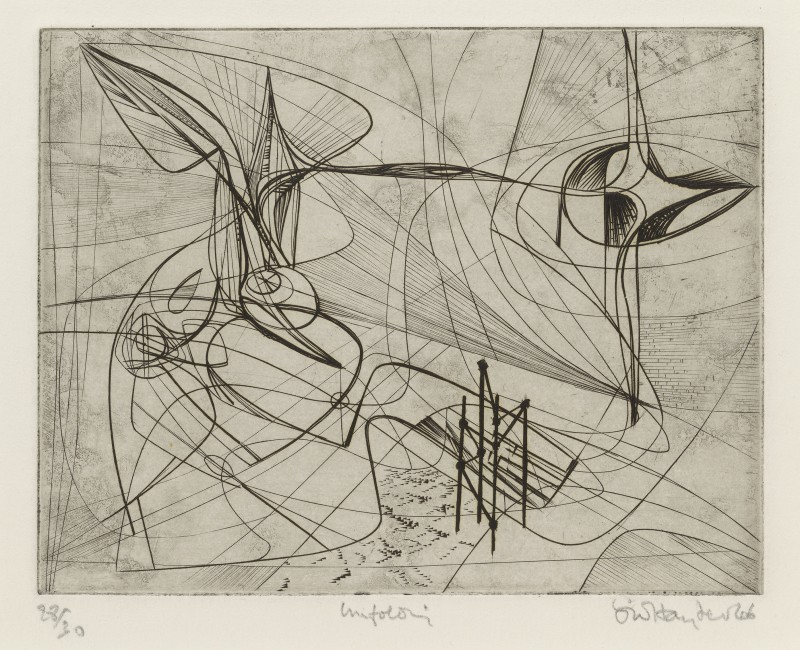 Stanley William HayterUnfolding, 1946Engraving14 x 18 cm (image)From the edition of 30 impressionsSigned, dated, titled and numbered%3Cdiv%20class%3D%22artist%22%3E%3Cspan%20class%3D%22artist%22%3E%3Cstrong%3EStanley%20William%20Hayter%3C/strong%3E%3C/span%3E%3C/div%3E%0D%3Cdiv%20class%3D%22title%22%3E%3Cem%3EUnfolding%3C/em%3E%2C%201946%3C/div%3E%0D%3Cdiv%20class%3D%22signed_and_dated%22%3ESigned%2C%20dated%2C%20titled%20and%20numbered%3C/div%3E%0D%3Cdiv%20class%3D%22medium%22%3EEngraving%20%3C/div%3E%0D%3Cdiv%20class%3D%22dimensions%22%3E14%20x%2018%20cm%20%28image%29%3C/div%3E%0D%3Cdiv%20class%3D%22edition_details%22%3EFrom%20the%20edition%20of%2030%20impressions%3C/div%3E
Stanley William HayterUnfolding, 1946Engraving14 x 18 cm (image)From the edition of 30 impressionsSigned, dated, titled and numbered%3Cdiv%20class%3D%22artist%22%3E%3Cspan%20class%3D%22artist%22%3E%3Cstrong%3EStanley%20William%20Hayter%3C/strong%3E%3C/span%3E%3C/div%3E%0D%3Cdiv%20class%3D%22title%22%3E%3Cem%3EUnfolding%3C/em%3E%2C%201946%3C/div%3E%0D%3Cdiv%20class%3D%22signed_and_dated%22%3ESigned%2C%20dated%2C%20titled%20and%20numbered%3C/div%3E%0D%3Cdiv%20class%3D%22medium%22%3EEngraving%20%3C/div%3E%0D%3Cdiv%20class%3D%22dimensions%22%3E14%20x%2018%20cm%20%28image%29%3C/div%3E%0D%3Cdiv%20class%3D%22edition_details%22%3EFrom%20the%20edition%20of%2030%20impressions%3C/div%3E -
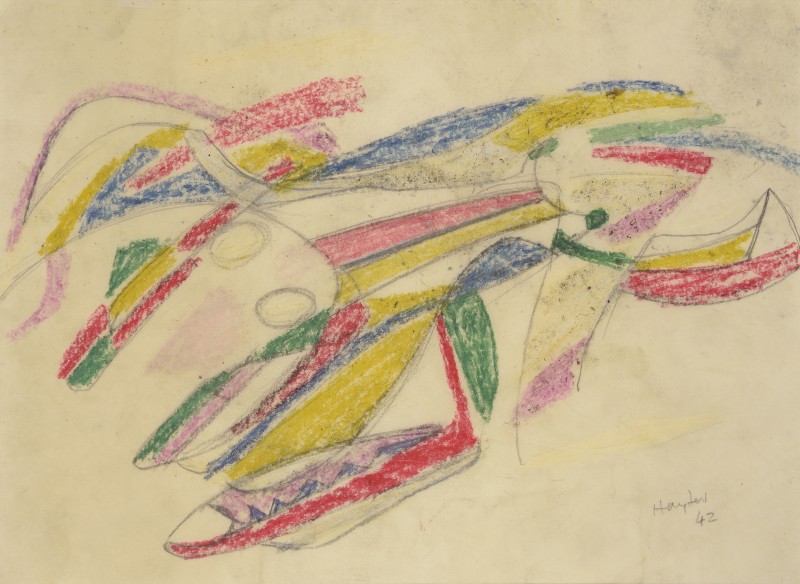 Stanley William HayterLobster, 1942Pencil and pastel on paper26 x 36 cmSigned and dated lower right%3Cdiv%20class%3D%22artist%22%3E%3Cspan%20class%3D%22artist%22%3E%3Cstrong%3EStanley%20William%20Hayter%3C/strong%3E%3C/span%3E%3C/div%3E%0D%3Cdiv%20class%3D%22title%22%3E%3Cem%3ELobster%3C/em%3E%2C%201942%3C/div%3E%0D%3Cdiv%20class%3D%22signed_and_dated%22%3ESigned%20and%20dated%20lower%20right%3C/div%3E%0D%3Cdiv%20class%3D%22medium%22%3EPencil%20and%20pastel%20on%20paper%3C/div%3E%0D%3Cdiv%20class%3D%22dimensions%22%3E26%20x%2036%20cm%3C/div%3E
Stanley William HayterLobster, 1942Pencil and pastel on paper26 x 36 cmSigned and dated lower right%3Cdiv%20class%3D%22artist%22%3E%3Cspan%20class%3D%22artist%22%3E%3Cstrong%3EStanley%20William%20Hayter%3C/strong%3E%3C/span%3E%3C/div%3E%0D%3Cdiv%20class%3D%22title%22%3E%3Cem%3ELobster%3C/em%3E%2C%201942%3C/div%3E%0D%3Cdiv%20class%3D%22signed_and_dated%22%3ESigned%20and%20dated%20lower%20right%3C/div%3E%0D%3Cdiv%20class%3D%22medium%22%3EPencil%20and%20pastel%20on%20paper%3C/div%3E%0D%3Cdiv%20class%3D%22dimensions%22%3E26%20x%2036%20cm%3C/div%3E -
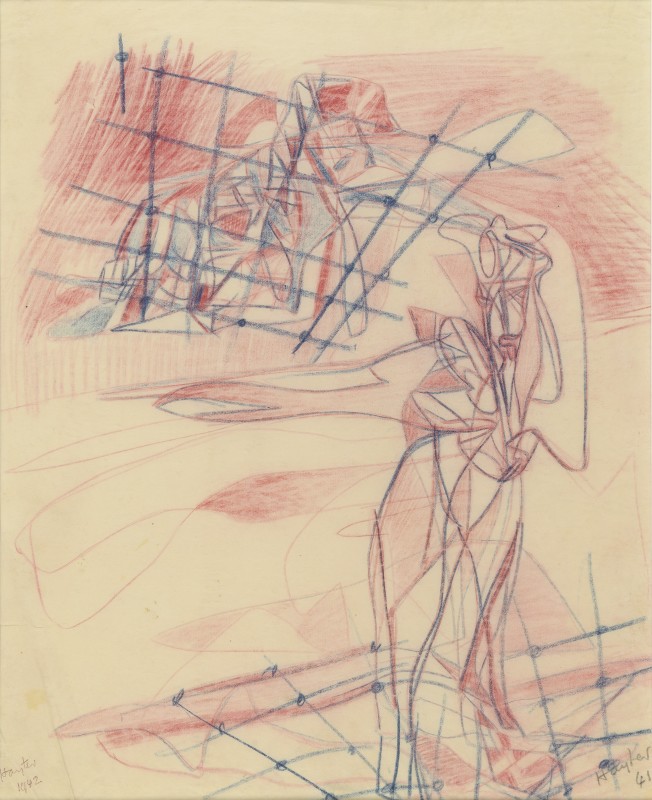 Stanley William HayterStudy, 1941/42Coloured pencil on paper35 x 28 xmSigned and dated in each corner%3Cdiv%20class%3D%22artist%22%3E%3Cspan%20class%3D%22artist%22%3E%3Cstrong%3EStanley%20William%20Hayter%3C/strong%3E%3C/span%3E%3C/div%3E%0D%3Cdiv%20class%3D%22title%22%3E%3Cem%3EStudy%3C/em%3E%2C%201941/42%3C/div%3E%0D%3Cdiv%20class%3D%22signed_and_dated%22%3ESigned%20and%20dated%20in%20each%20corner%3C/div%3E%0D%3Cdiv%20class%3D%22medium%22%3EColoured%20pencil%20on%20paper%3C/div%3E%0D%3Cdiv%20class%3D%22dimensions%22%3E35%20x%2028%20xm%3C/div%3E
Stanley William HayterStudy, 1941/42Coloured pencil on paper35 x 28 xmSigned and dated in each corner%3Cdiv%20class%3D%22artist%22%3E%3Cspan%20class%3D%22artist%22%3E%3Cstrong%3EStanley%20William%20Hayter%3C/strong%3E%3C/span%3E%3C/div%3E%0D%3Cdiv%20class%3D%22title%22%3E%3Cem%3EStudy%3C/em%3E%2C%201941/42%3C/div%3E%0D%3Cdiv%20class%3D%22signed_and_dated%22%3ESigned%20and%20dated%20in%20each%20corner%3C/div%3E%0D%3Cdiv%20class%3D%22medium%22%3EColoured%20pencil%20on%20paper%3C/div%3E%0D%3Cdiv%20class%3D%22dimensions%22%3E35%20x%2028%20xm%3C/div%3E -
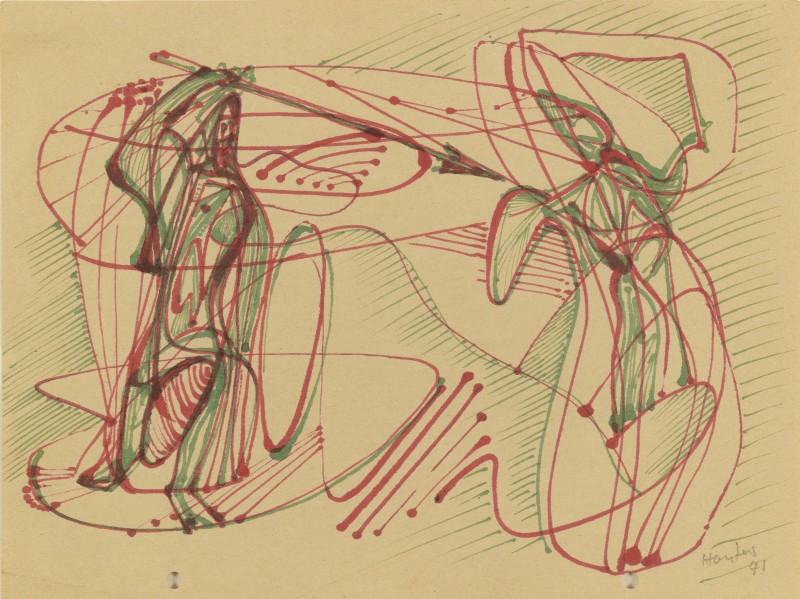 Stanley William HayterStudy of Soldiers, 1941Ink on paper20 x 26 cmSigned and dated lower right%3Cdiv%20class%3D%22artist%22%3E%3Cspan%20class%3D%22artist%22%3E%3Cstrong%3EStanley%20William%20Hayter%3C/strong%3E%3C/span%3E%3C/div%3E%0D%3Cdiv%20class%3D%22title%22%3E%3Cem%3EStudy%20of%20Soldiers%3C/em%3E%2C%201941%3C/div%3E%0D%3Cdiv%20class%3D%22signed_and_dated%22%3ESigned%20and%20dated%20lower%20right%3C/div%3E%0D%3Cdiv%20class%3D%22medium%22%3EInk%20on%20paper%3C/div%3E%0D%3Cdiv%20class%3D%22dimensions%22%3E20%20x%2026%20cm%3C/div%3E
Stanley William HayterStudy of Soldiers, 1941Ink on paper20 x 26 cmSigned and dated lower right%3Cdiv%20class%3D%22artist%22%3E%3Cspan%20class%3D%22artist%22%3E%3Cstrong%3EStanley%20William%20Hayter%3C/strong%3E%3C/span%3E%3C/div%3E%0D%3Cdiv%20class%3D%22title%22%3E%3Cem%3EStudy%20of%20Soldiers%3C/em%3E%2C%201941%3C/div%3E%0D%3Cdiv%20class%3D%22signed_and_dated%22%3ESigned%20and%20dated%20lower%20right%3C/div%3E%0D%3Cdiv%20class%3D%22medium%22%3EInk%20on%20paper%3C/div%3E%0D%3Cdiv%20class%3D%22dimensions%22%3E20%20x%2026%20cm%3C/div%3E -
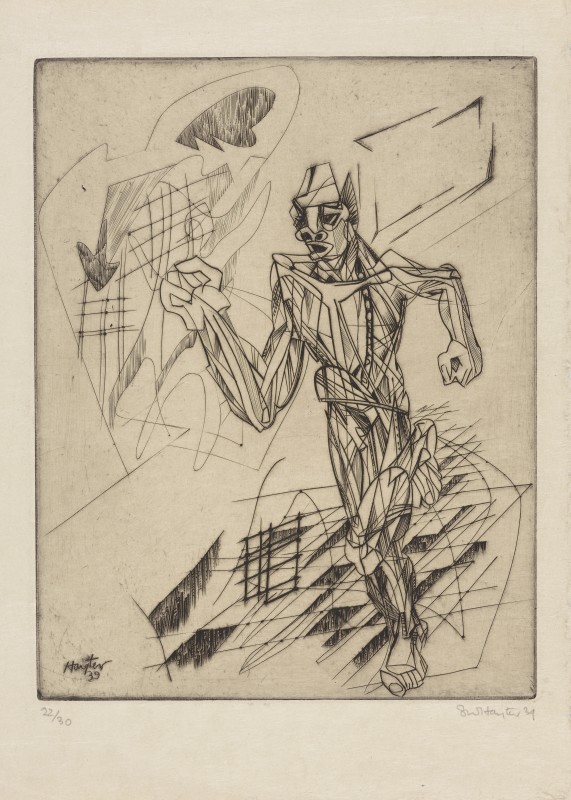 Stanley William HayterRunner, 1939Engraving27 x 21 cm (image)From the edition of 30 impressionsSigned, dated and numbered%3Cdiv%20class%3D%22artist%22%3E%3Cspan%20class%3D%22artist%22%3E%3Cstrong%3EStanley%20William%20Hayter%3C/strong%3E%3C/span%3E%3C/div%3E%0D%3Cdiv%20class%3D%22title%22%3E%3Cem%3ERunner%3C/em%3E%2C%201939%3C/div%3E%0D%3Cdiv%20class%3D%22signed_and_dated%22%3ESigned%2C%20dated%20and%20numbered%3C/div%3E%0D%3Cdiv%20class%3D%22medium%22%3EEngraving%3C/div%3E%0D%3Cdiv%20class%3D%22dimensions%22%3E27%20x%2021%20cm%20%28image%29%3C/div%3E%0D%3Cdiv%20class%3D%22edition_details%22%3EFrom%20the%20edition%20of%2030%20impressions%3C/div%3E
Stanley William HayterRunner, 1939Engraving27 x 21 cm (image)From the edition of 30 impressionsSigned, dated and numbered%3Cdiv%20class%3D%22artist%22%3E%3Cspan%20class%3D%22artist%22%3E%3Cstrong%3EStanley%20William%20Hayter%3C/strong%3E%3C/span%3E%3C/div%3E%0D%3Cdiv%20class%3D%22title%22%3E%3Cem%3ERunner%3C/em%3E%2C%201939%3C/div%3E%0D%3Cdiv%20class%3D%22signed_and_dated%22%3ESigned%2C%20dated%20and%20numbered%3C/div%3E%0D%3Cdiv%20class%3D%22medium%22%3EEngraving%3C/div%3E%0D%3Cdiv%20class%3D%22dimensions%22%3E27%20x%2021%20cm%20%28image%29%3C/div%3E%0D%3Cdiv%20class%3D%22edition_details%22%3EFrom%20the%20edition%20of%2030%20impressions%3C/div%3E -
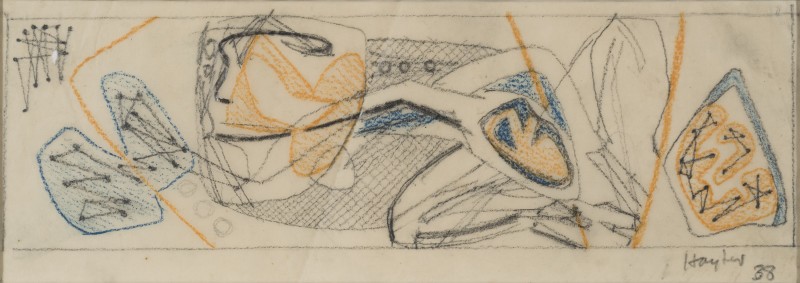 Stanley William HayterStudy, 1938Pencil and crayon on paper12 x 25 cmSigned and dated lower right%3Cdiv%20class%3D%22artist%22%3E%3Cspan%20class%3D%22artist%22%3E%3Cstrong%3EStanley%20William%20Hayter%3C/strong%3E%3C/span%3E%3C/div%3E%0D%3Cdiv%20class%3D%22title%22%3E%3Cem%3EStudy%3C/em%3E%2C%201938%3C/div%3E%0D%3Cdiv%20class%3D%22signed_and_dated%22%3ESigned%20and%20dated%20lower%20right%3C/div%3E%0D%3Cdiv%20class%3D%22medium%22%3EPencil%20and%20crayon%20on%20paper%3C/div%3E%0D%3Cdiv%20class%3D%22dimensions%22%3E12%20x%2025%20cm%3C/div%3E
Stanley William HayterStudy, 1938Pencil and crayon on paper12 x 25 cmSigned and dated lower right%3Cdiv%20class%3D%22artist%22%3E%3Cspan%20class%3D%22artist%22%3E%3Cstrong%3EStanley%20William%20Hayter%3C/strong%3E%3C/span%3E%3C/div%3E%0D%3Cdiv%20class%3D%22title%22%3E%3Cem%3EStudy%3C/em%3E%2C%201938%3C/div%3E%0D%3Cdiv%20class%3D%22signed_and_dated%22%3ESigned%20and%20dated%20lower%20right%3C/div%3E%0D%3Cdiv%20class%3D%22medium%22%3EPencil%20and%20crayon%20on%20paper%3C/div%3E%0D%3Cdiv%20class%3D%22dimensions%22%3E12%20x%2025%20cm%3C/div%3E -
 Stanley William HayterStudy, 1936Coloured pencil on paper26 x 20 cmSigned and dated lower right%3Cdiv%20class%3D%22artist%22%3E%3Cspan%20class%3D%22artist%22%3E%3Cstrong%3EStanley%20William%20Hayter%3C/strong%3E%3C/span%3E%3C/div%3E%0D%3Cdiv%20class%3D%22title%22%3E%3Cem%3EStudy%3C/em%3E%2C%201936%3C/div%3E%0D%3Cdiv%20class%3D%22signed_and_dated%22%3ESigned%20and%20dated%20lower%20right%3C/div%3E%0D%3Cdiv%20class%3D%22medium%22%3EColoured%20pencil%20on%20paper%3C/div%3E%0D%3Cdiv%20class%3D%22dimensions%22%3E26%20x%2020%20cm%3C/div%3E
Stanley William HayterStudy, 1936Coloured pencil on paper26 x 20 cmSigned and dated lower right%3Cdiv%20class%3D%22artist%22%3E%3Cspan%20class%3D%22artist%22%3E%3Cstrong%3EStanley%20William%20Hayter%3C/strong%3E%3C/span%3E%3C/div%3E%0D%3Cdiv%20class%3D%22title%22%3E%3Cem%3EStudy%3C/em%3E%2C%201936%3C/div%3E%0D%3Cdiv%20class%3D%22signed_and_dated%22%3ESigned%20and%20dated%20lower%20right%3C/div%3E%0D%3Cdiv%20class%3D%22medium%22%3EColoured%20pencil%20on%20paper%3C/div%3E%0D%3Cdiv%20class%3D%22dimensions%22%3E26%20x%2020%20cm%3C/div%3E -
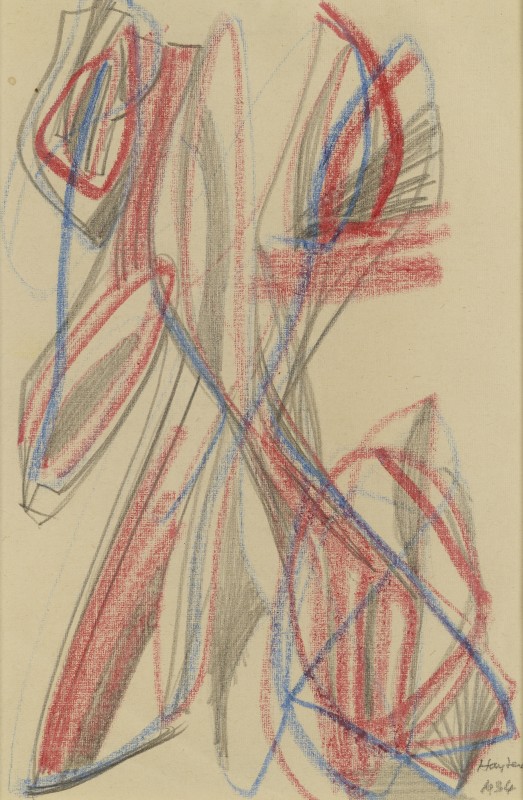 Stanley William HayterStudies for Lucrèce, 1934Pastel and pencil on paper22 x 15 cmSigned and dated lower right%3Cdiv%20class%3D%22artist%22%3E%3Cspan%20class%3D%22artist%22%3E%3Cstrong%3EStanley%20William%20Hayter%3C%2Fstrong%3E%3C%2Fspan%3E%3C%2Fdiv%3E%0D%3Cdiv%20class%3D%22title%22%3E%3Cem%3EStudies%20for%20Lucr%C3%A8ce%3C%2Fem%3E%2C%201934%3C%2Fdiv%3E%0D%3Cdiv%20class%3D%22signed_and_dated%22%3ESigned%20and%20dated%20lower%20right%3C%2Fdiv%3E%0D%3Cdiv%20class%3D%22medium%22%3EPastel%20and%20pencil%20on%20paper%3C%2Fdiv%3E%0D%3Cdiv%20class%3D%22dimensions%22%3E22%20x%2015%20cm%3C%2Fdiv%3E
Stanley William HayterStudies for Lucrèce, 1934Pastel and pencil on paper22 x 15 cmSigned and dated lower right%3Cdiv%20class%3D%22artist%22%3E%3Cspan%20class%3D%22artist%22%3E%3Cstrong%3EStanley%20William%20Hayter%3C%2Fstrong%3E%3C%2Fspan%3E%3C%2Fdiv%3E%0D%3Cdiv%20class%3D%22title%22%3E%3Cem%3EStudies%20for%20Lucr%C3%A8ce%3C%2Fem%3E%2C%201934%3C%2Fdiv%3E%0D%3Cdiv%20class%3D%22signed_and_dated%22%3ESigned%20and%20dated%20lower%20right%3C%2Fdiv%3E%0D%3Cdiv%20class%3D%22medium%22%3EPastel%20and%20pencil%20on%20paper%3C%2Fdiv%3E%0D%3Cdiv%20class%3D%22dimensions%22%3E22%20x%2015%20cm%3C%2Fdiv%3E
